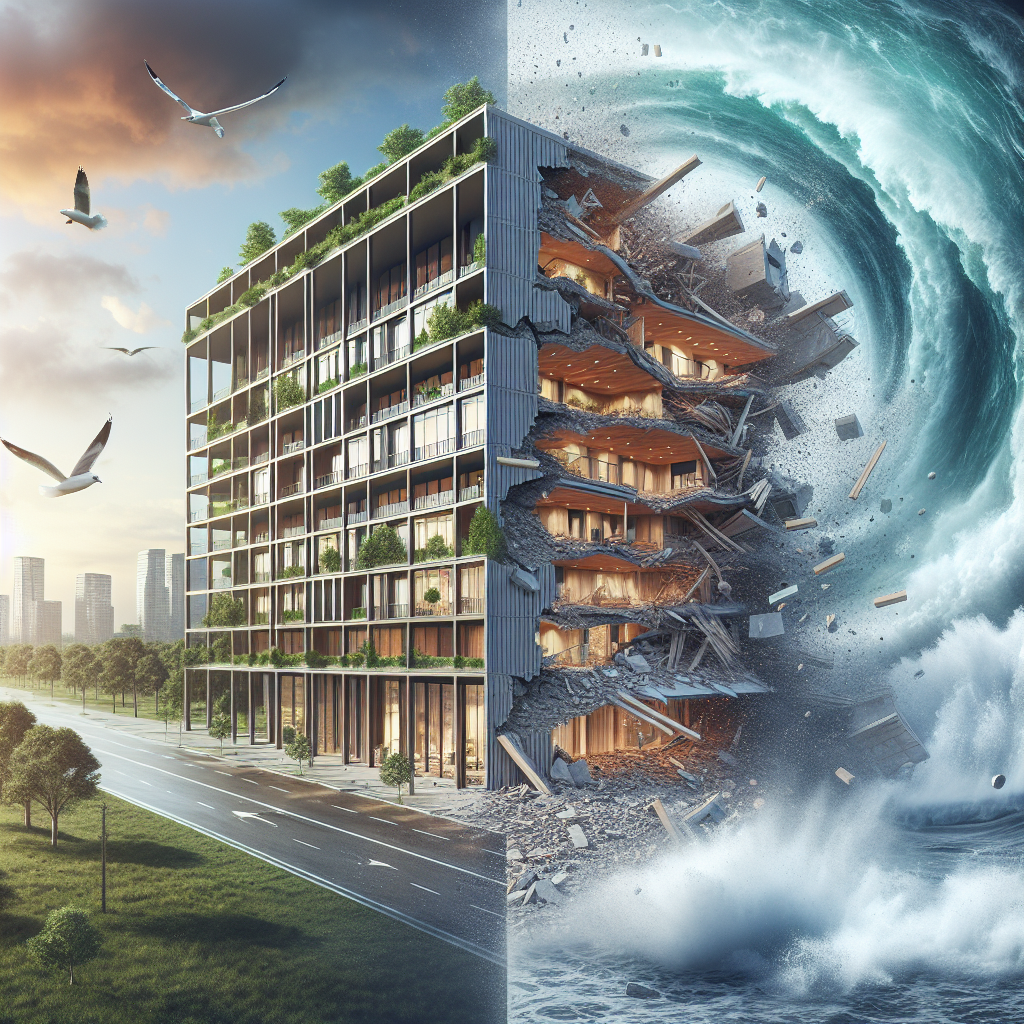Natural Disasters and Sustainable Construction: Building for Resilience
In an era marked by the intensifying impacts of climate change, natural disasters such as hurricanes, earthquakes, floods, and wildfires are becoming more frequent and devastating. These calamities not only threaten lives but also cause massive economic losses and disrupt communities. As a response, the construction industry is increasingly focusing on sustainable construction practices aimed at building resilience into the very fabric of our cities and towns. This approach to construction is not only environmentally responsible but also crucial for safeguarding our future.
Understanding Sustainable Construction
Sustainable construction involves the use of innovative techniques and materials that are environmentally friendly, energy-efficient, and resilient to natural disasters. It emphasizes the importance of building structures that can withstand the forces of nature, thus ensuring the safety of occupants and reducing the need for costly repairs or rebuilding after a disaster. Sustainable construction also focuses on minimizing the environmental impact of buildings throughout their lifecycle, from design and construction to operation and demolition.
The Role of Technology
Advancements in technology play a pivotal role in sustainable construction. Modern engineering techniques and materials such as earthquake-resistant foundations, flood-resistant designs, and fire-resistant materials are being incorporated into buildings to enhance their resilience. Additionally, technology like Building Information Modeling (BIM) allows architects and engineers to simulate how buildings will respond to various natural disasters, enabling them to design structures that are both resilient and sustainable.
Case Studies of Resilience
Numerous examples around the world showcase the effectiveness of sustainable construction in the face of natural disasters. In Japan, earthquake-resistant engineering practices, including base isolation and seismic dampers, have been instrumental in protecting buildings from severe damage. In flood-prone areas like the Netherlands, innovative water management strategies and elevated structures prevent water damage during floods. Meanwhile, in fire-prone regions such as California, the use of fire-resistant materials and landscaping techniques has proven effective in mitigating the impact of wildfires.
The Economic and Social Benefits
Investing in sustainable construction offers significant economic benefits. Buildings designed to withstand natural disasters incur lower repair and reconstruction costs, reducing the economic burden on communities and governments. Moreover, resilient buildings ensure that businesses can continue operations with minimal disruption, supporting local economies in the aftermath of a disaster. On a social level, resilient construction practices foster a sense of security and well-being among residents, as they are assured that their homes and workplaces are safe.
Challenges and Considerations
Despite the clear benefits, the adoption of sustainable construction practices faces several challenges. The initial cost of implementing advanced technologies and materials can be higher than traditional construction methods, posing a barrier for some developers and homeowners. Additionally, there is a need for widespread education and training among construction professionals to ensure the effective implementation of sustainable practices. Governments and industry stakeholders must work together to create incentives and regulations that promote resilient construction.
Moving Forward
The path towards a resilient future requires a collective effort from governments, businesses, communities, and individuals. By prioritizing sustainable construction practices, we can build structures that not only withstand the forces of nature but also contribute positively to the environment. It is imperative that we invest in research, innovation, and education to advance our understanding of sustainable construction and make it accessible to all.
FAQs
Q: What is sustainable construction?
A: Sustainable construction refers to the practice of creating buildings and infrastructure in a way that is environmentally responsible and resource-efficient throughout their lifecycle.
Q: How can buildings be made more resistant to earthquakes?
A: Buildings can be made more resistant to earthquakes through various engineering techniques such as base isolation, which allows buildings to move independently of the ground motion, and seismic dampers, which absorb and dissipate the energy from an earthquake.
Q: Are sustainable buildings more expensive?
A: While the initial cost of sustainable buildings can be higher due to the use of advanced materials and technologies, they often lead to lower operational and maintenance costs, as well as savings from reduced damage in the event of a natural disaster.
Q: How can communities become more resilient to natural disasters?
A: Communities can become more resilient by adopting sustainable construction practices, improving emergency preparedness, investing in early warning systems, and fostering a culture of sustainability and resilience among residents.
Q: What role do governments play in promoting sustainable construction?
A: Governments can play a crucial role by implementing policies and regulations that encourage sustainable construction, offering incentives for green building projects, and investing in research and education to advance sustainable practices.
By embracing sustainable construction, we can create a resilient built environment capable of withstanding the challenges posed by natural disasters, while also ensuring a sustainable future for generations to come.

